
In the communications field, technological pursuits are constantly advancing. When it comes to the Internet of Things (IoT), various communication manufacturers have already begun to tantalize us.

There are many wireless communication technology standards for IoT, which can be divided into two categories based on transmission distance: one category includes Bluetooth/BLE, WiFi, Zigbee, and Z-Wave, which are suitable for short-distance communication technologies in local area networks; the other category is LPWAN (Low-Power Wide-Area Network), which refers to wide-area network communication technologies.

LPWAN can also be divided into two categories: one category includes technologies such as LoRa and SigFox, which operate in unlicensed spectrum; the other category includes cellular communication technologies supported by 3GPP, such as EC-GSM, eMTC, and NB-IoT, which operate in licensed spectrum.

Bluetooth
Bluetooth technology was originally developed by telecommunications giant Ericsson in 1994 as a replacement for RS232 data cables. Bluetooth can connect multiple devices, overcoming the challenges of data synchronization. As the head of Ericsson’s Bluetooth group said, the original idea behind designing Bluetooth was to “end the cable nightmare.” Later, the Bluetooth Special Interest Group (Bluetooth SIG) established the technical standards for Bluetooth. Bluetooth is a standard for short-range wireless technology that allows mobile devices, fixed devices, and personal area networks to exchange data over short distances (using UHF radio waves in the 2.4–2.485 GHz ISM band), especially Bluetooth Smart or Bluetooth Low Energy (BLE), which is an important protocol in IoT applications.

BLE, or Bluetooth Low Energy, started to be supported from Bluetooth 4.0. BLE is mainly aimed at miniature wireless sensors or remote controls that use completely asynchronous communication. These devices send very small amounts of data (usually a few bytes) and send it infrequently (for example, a few times per second to once per minute, or even less). In the health field: mobile phones monitor blood pressure; in the sports field: mobile phone pedometers, etc. The Bluetooth 5.0 standard has been released. However, Bluetooth also has obvious shortcomings: limited connection devices (theoretically seven devices), and it cannot form a mesh network.
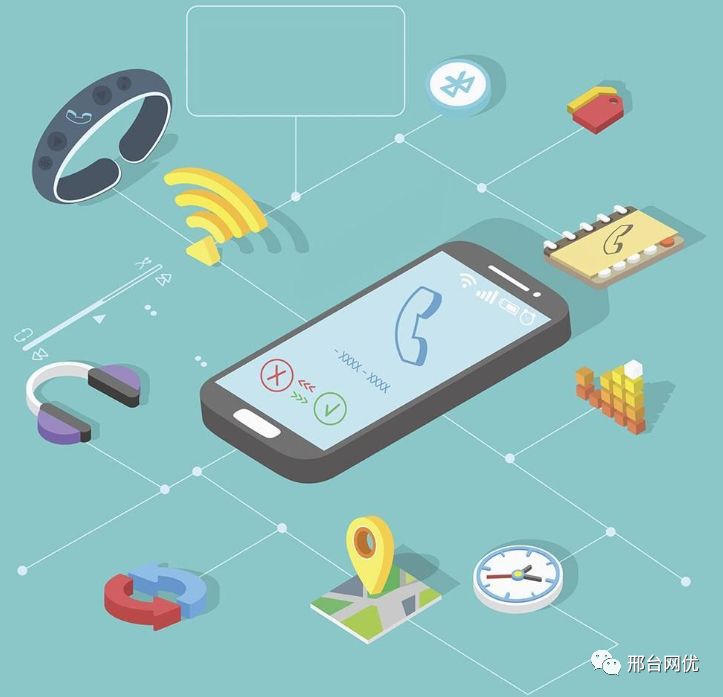

WIFI
WIFI is a technology that allows electronic products to connect to a wireless local area network (WLAN), typically using the 2.4 GHz UHF radio frequency band. Connecting to a local area network is usually password-protected and can be open; as long as the area is within the coverage of the WIFI signal, the WIFI signal can be searched, allowing devices within any WLAN range to connect. Currently, the most common WIFI standard used in homes, shopping malls, and enterprises is 802.11n, which provides strict throughput in hundreds of megabits per second, advantageous for file transfers, but WIFI is relatively power-hungry in many IoT applications.

There is a common view that any smart device that can connect to the 220V mains power does not need to consider power consumption; in this case, using a WiFi connection is the best choice. However, for small, non-fixed IoT devices, achieving long battery life is naturally not feasible using WiFi, and the WiFi technology also has security shortcomings, which may become a Damocles sword hanging over smart homes.

NFC
NFC, or Near-field communication, is a short-range, high-frequency wireless technology that falls under RFID technology, operating at a frequency of 13.56 MHz with an effective working distance of less than 20 cm. It has three transmission speeds: 106 Kb/s, 212 Kb/s, or 424 Kb/s. Data reading and exchange can be conducted through three business modes: card, card reader, and point-to-point. NFC was first developed in 2002 by Philips Semiconductors, Nokia, and Sony. In 2004, the NFC Forum was established to standardize and promote near-field communication technology. Currently, NFC communication technology has wide applications in mobile payments and consumer electronics. For example, many mobile phones already support NFC applications, and small payment systems such as bus cards use NFC technology.

Disadvantages: NFC does not have the same risk of wireless signals being intercepted as other wireless communications, but its NFC cards are too simple and the passive response design is also an unsafe factor. Reported risks include: the transaction information in NFC bank cards can be easily read by other card readers or even smartphones. Additionally, short communication distance and low communication speed are also its drawbacks, limiting NFC to specific IoT applications.
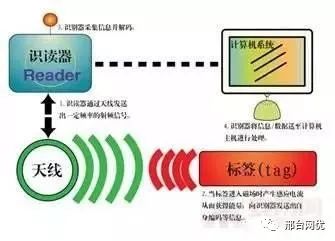
RF
Radio frequency (RF) is actually radio frequency current, which is a term for high-frequency alternating electromagnetic waves, also known as small wireless. It can radiate electromagnetic frequencies into space, with frequency ranges from 300 kHz to 300 GHz. Current changes less than 1000 times per second are low-frequency currents, while currents changing more than 10000 times per second are high-frequency currents, and RF refers to high-frequency currents changing more than 10000 times per second. An RF system consists of three parts: a tag (RF card), an antenna, and a reader.
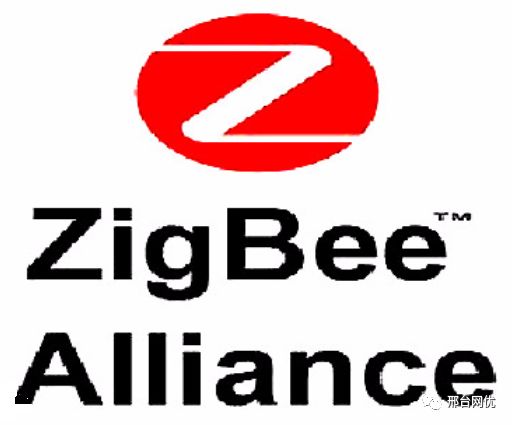
Zigbee
Zigbee (also known as the Zigbee protocol) derives its name from the bee’s waggle dance. Its advantages include low power consumption, self-organization, low complexity, short distance, and low data rate. Like Bluetooth, Zigbee has a wide range of operational foundations and application fields. Zigbee is a low-power local area network protocol based on the IEEE 802.15.4 standard. According to international regulations, Zigbee technology is a low-power, short-distance wireless communication technology. Zigbee operates in three frequency bands: 2.4 GHz (popular worldwide), 868 MHz (popular in Europe), and 915 MHz (popular in the United States), with maximum transmission rates of 250 kbit/s, 20 kbit/s, and 40 kbit/s, respectively, and a transmission distance ranging from 10 to 75 meters, which can be extended further.
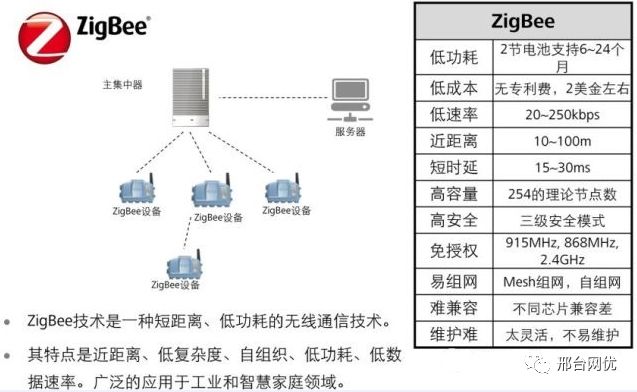
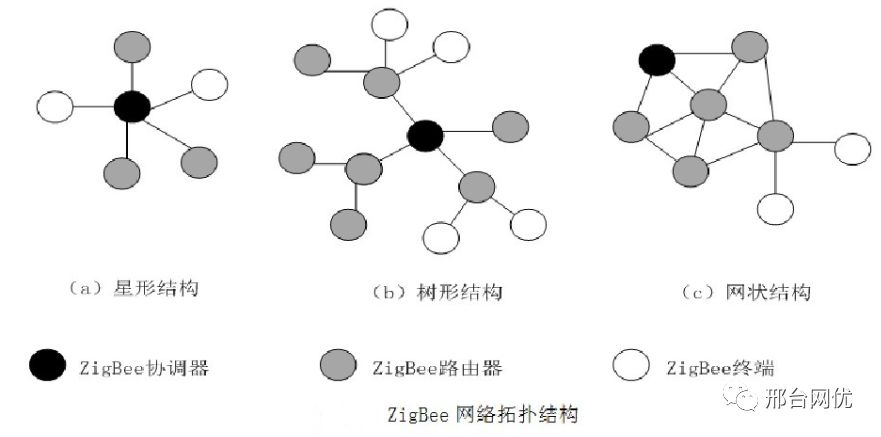
Compared to Bluetooth’s point-to-point transmission method, the advantage of the Zigbee protocol lies in its self-organization capability, supporting up to 65000 devices in a network. For smart homes, another valuable advantage of the Zigbee protocol is its high security; there has yet to be a reported incident of hacking.
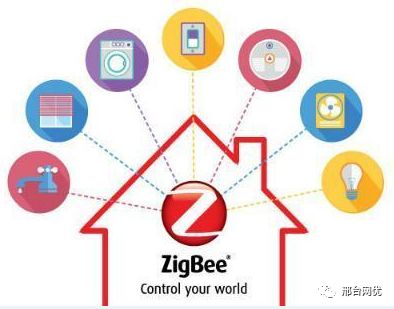
Currently, many products in the smart home field are based on Zigbee technology, and it can be said that Zigbee technology occupies a significant portion of the smart home (HA: Home Automation) protocol landscape. A common Zigbee product on the market today is Xiaomi’s smart gateway, which connects multiple smart devices through a central control system (gateway) using the Zigbee communication protocol. This central control system links to mobile phones via WiFi, enabling remote smart control.

Z-Wave
Z-Wave is a wireless networking specification led by the Danish company Zensys. Although the Z-Wave Alliance is not as powerful as the Zigbee Alliance, all members of the Z-Wave Alliance are manufacturers that already have existing products in the smart home field. The alliance currently has over 160 internationally renowned companies, covering almost all countries and regions of the world. Unlike Zigbee technology’s short-distance wireless networking communication technology, Z-Wave’s technical platform is specifically aimed at home automation and is a new alliance formed by chip and software developers Zensys and several others to promote the adoption of the Z-Wave protocol in the home automation field. Cisco and Intel have invested in Zensys and joined the Z-Wave Alliance, with Microsoft also being a member.

Why does Z-Wave occupy a strong position in the smart home field? This is mainly based on the attributes of Z-Wave. Z-Wave is an emerging, low-cost, low-power, high-reliability, short-distance wireless communication technology based on radio frequency. It operates in the frequency band of 908.42 MHz (USA) to 868.42 MHz (Europe), using FSK (BFSK/GFSK) modulation, with a data transmission rate of 9.6 kbps. The effective coverage range is 30 meters indoors and can exceed 100 meters outdoors, making it suitable for narrowband applications.
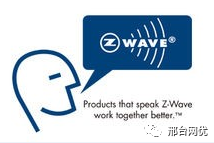
Although Z-Wave has characteristics of simple structure and reliable performance, obtaining authorization for Z-Wave chips is still relatively difficult. More critically, the frequency band used by Z-Wave (865.2 MHz-956 MHz) is non-civilian in China.

The above discusses short-distance communication technologies. Next, we will introduce wide-area network communication technologies. The rapid development of the Internet of Things has posed higher requirements for wireless communication technologies, leading to the rapid rise of LPWAN (Low-Power Wide-Area Network), specifically designed for low bandwidth, low power consumption, long distance, and massive connectivity IoT applications. IoT applications need to consider many factors, such as node costs, network costs, battery life, data transmission rates (throughput), latency, mobility, network coverage, and deployment types.



LoRa
LoRa is short for Long Range, a type of LPWAN communication technology promoted by the American company Semtech. This solution changes the previous trade-off considerations between transmission distance and power consumption, providing users with a simple system that achieves long distances, long battery life, and large capacity, thus expanding sensor networks. Currently, LoRa mainly operates in globally free frequency bands, including 433, 868, and 915 MHz. LoRa technology features long distance, low power consumption (long battery life), multi-node, and low cost.
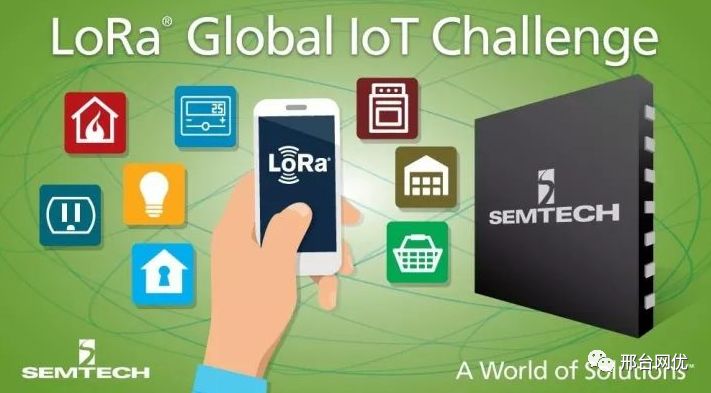
LoRa uses unlicensed ISM bands, but the usage of ISM bands varies by country or region. In the Chinese market, the China LoRa Application Alliance (CLAA), led by ZTE, recommends using the 470-518 MHz band. The 470-510 MHz band is used for wireless metering instruments. Since LoRa operates in unlicensed bands, network construction can be done without application, and the network architecture is simple with low operating costs.

LoRa’s business model profits from monopolizing the manufacturing and sales of core chips. Semtech provides network construction technology and standards, supports partners in developing hardware and networks, and encourages the construction of networks for public or private use. As the scale of the network expands, the demand for core chips will also increase; the more chips sold, the more profit Semtech makes.

SigFox
SIGFOX is a French company founded in 2009, known as the pioneer of low-power wide-area networks, creating a wireless network to connect low-power devices, primarily used for low-power IoT applications, such as electric meters, which require continuous transmission of small amounts of data. The currently popular LPWA technology initially developed from unlicensed spectrum technology, with Sigfox being the first company to enter this field in 2009. They developed a very simple communication protocol that can operate in unlicensed spectrum, covering a range of 3-10 kilometers, providing battery life of several years under low-frequency usage. In Europe, it widely uses 868 MHz, while in the United States, it uses 915 MHz.
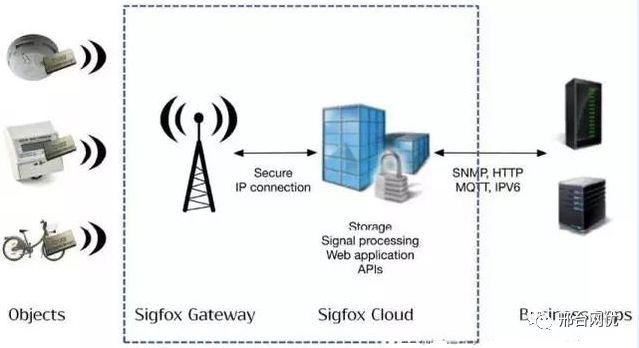
Sigfox’s business model is the opposite of LoRa’s; Sigfox gives up most hardware revenue and profits from selling software technology and network services. Sigfox opens all hardware products to production partners, which is key to keeping module prices low. However, low prices for chips and modules can be detrimental to manufacturers as it means no profit. Additionally, Sigfox is both a standard setter and a network operator, possessing all core technologies related to network construction. It deploys networks through partnerships with telecom operators or self-built networks, profiting from controlling both network and cloud. Its ultimate goal is to profit from every piece of data in the IoT, undoubtedly encroaching on the telecom operators’ territory. In the early stages, this model was still attractive to telecom operators. The Sigfox network has covered all of France and Spain, and parts of the United States, the Netherlands, and the UK.
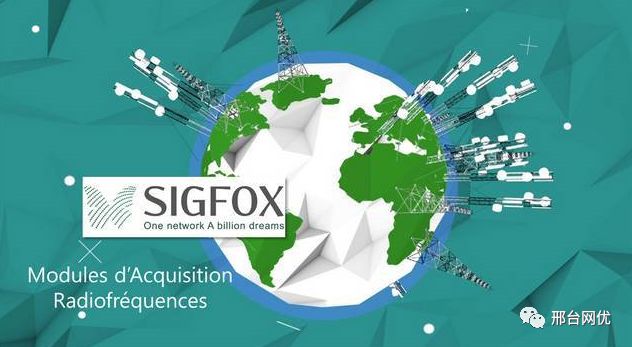

EC-GSM
Extended Coverage GSM technology (EC-GSM) is an extended version of GSM technology, known as Extended Coverage GSM (EC-GSM-IoT). With this technology, existing GSM (2G) base stations can also be more suitable for IoT applications. The same GSM base station can have a larger communication coverage area and support more GSM terminal nodes. According to 3GPP, EC-GSM-IoT can achieve uplink and downlink rates of 70-350 kbps under GMSK modulation, while rates can reach 240 kbps under 8PSK modulation. 3GPP also requires that terminal modules meeting the EC-GSM-IoT standard can remain in standby for at least 10 years on 5Wh of power. The capacity of a single EC-GSM base station can reach up to 50,000 nodes, which is a 20 dB increase in coverage compared to ordinary GPRS at a power level of 33 dBm, similar to that of NB-IoT. The minimum spectrum required for independent deployment of EC-GSM is 2.4 MHz, and it is challenging for operators to re-plan this spectrum. Many operators have decided to phase out GSM, leaving the industry chain’s prospects uncertain.
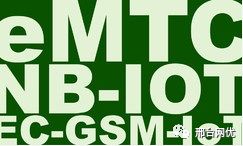
In the 3GPP specifications, there are three licensed spectrum IoT wireless connection technologies: NB-IoT, eMTC, and EC-GSM. EC-GSM is based on GSM (2G) technology, and it is now basically not being focused on. Therefore, the emphasis is on NB-IoT and eMTC.

eMTC
LTE-M, or LTE-Machine-to-Machine, is IoT technology based on the evolution of LTE, referred to as Low-Cost MTC in R12 and LTE enhanced MTC (LTE enhancements for Machine Type Communications) in R13, i.e., eMTC, which aims to meet the needs of IoT devices based on existing LTE carriers. eMTC is deployed based on cellular networks, supporting peak rates of 1 Mbps for both uplink and downlink, and belongs to the mid-rate range in IoT. Its user devices can directly access existing LTE networks through RF and baseband bandwidth supporting 1.4 MHz. eMTC is regarded as the second card for operators to enter the IoT market.

eMTC has advantages in smart logistics, including anti-theft, anti-tampering, real-time temperature sensing, and location tracking. It can monitor and locate in real-time, record and upload information, and query travel trajectories. In smart wearable devices, it supports health monitoring, video services, data return, and location tracking. eMTC can also serve as a means for operators to add value, with application scenarios including smart charging piles, airport treasure, elevator guardians, smart bus stop signs, and public bicycle management.

NB-IoT
All three major operators in China are promoting NB-IoT technology, which has become an important branch of the Internet of Things (Narrow Band Internet of Things, NB-IoT). NB-IoT is built on cellular networks, consuming about 180 KHz of bandwidth, and can be directly deployed on GSM, UMTS, or LTE networks to reduce deployment costs and achieve smooth upgrades.
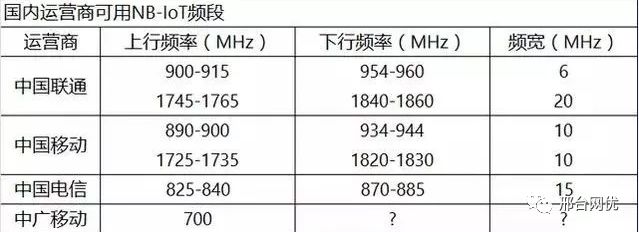
NB-IoT has four major characteristics:
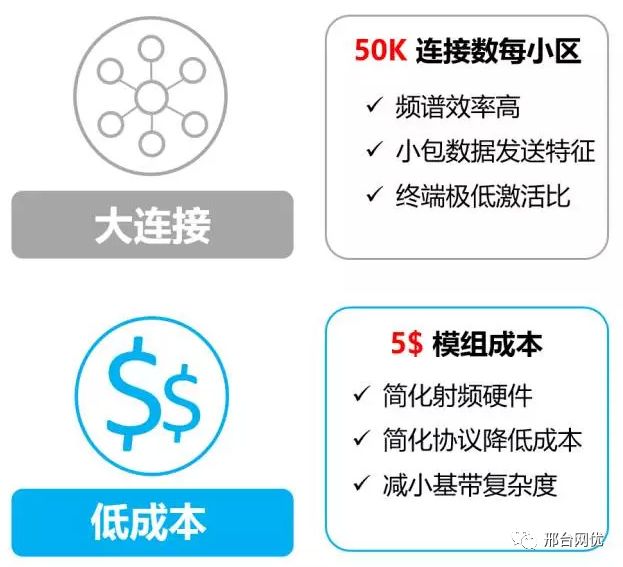
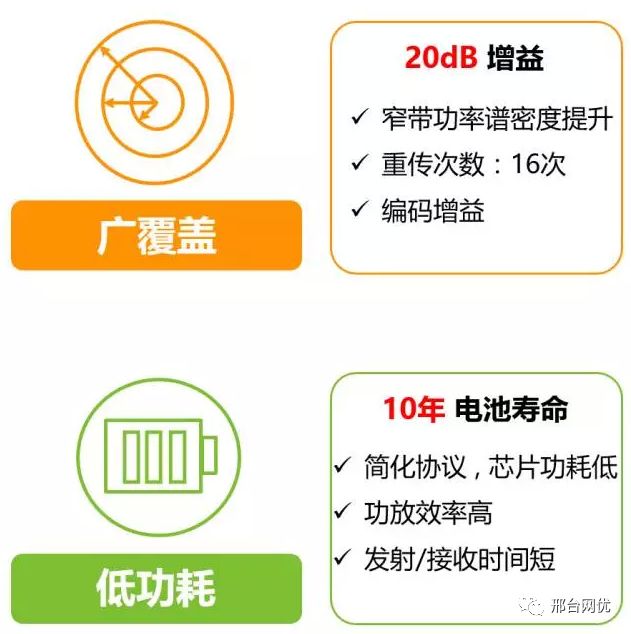
The NB-IoT network architecture is as follows:

A table to understand the differences between the four low-power wide-area network technologies:

NB-IoT applications in animal husbandry
Animal husbandry is mainly divided into captive and free-range, with the northern and western borders of China being the primary grazing areas. The advantages of free-range include high meat quality and reduced feed costs, but it also brings many inconveniences in livestock management. Scientific farming is bound to become a trend for future development.

With large individual scales of cattle and sheep, GPRS base station capacity may be insufficient, battery life can be an issue, and farms are often remote, which may lead to signal coverage intensity problems, resulting in data transmission failures… The birth of NB-IoT technology perfectly solves a series of troubles.
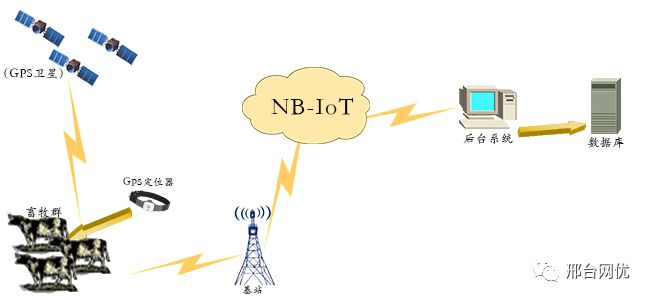
NB-IoT applications in remote metering
Water and gas meters are closely related to our daily lives. NB-IoT remote metering inherits the functions of GPRS remote metering while also having massive capacity. The communication user capacity of the same base station is 10 times that of GPRS remote metering. With lower power consumption, under the same usage conditions, the standby time of NB-IoT terminal modules can last for more than ten years. The new technology has stronger signal coverage (it can cover indoors and basements). With lower module costs, the expected price for a single connection module is no more than $1, and it will likely decrease further.
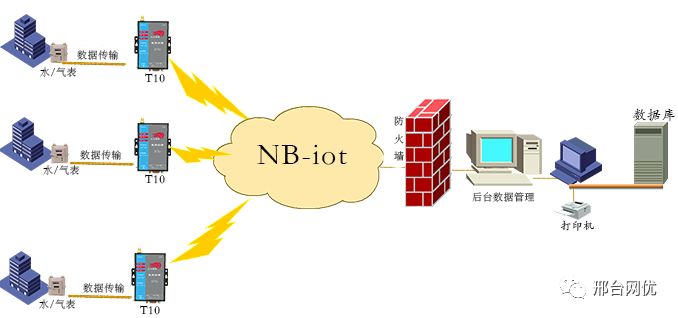
NB-IoT applications in manhole cover monitoring
The theft or damage of manhole covers not only results in direct losses of public property but may also cause irreparable personal injuries and economic losses to nearby pedestrians and vehicles.

Using NB-IoT for positioning and monitoring management of manhole covers can timely grasp the status information of the manhole covers and issue alerts to management personnel via the NB-IoT network when the manhole covers move or are damaged, thus minimizing harm and losses.
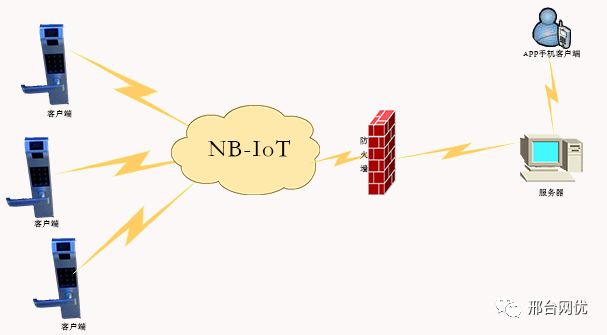
NB-IoT applications in smart homes (smart locks)
Currently, smart locks use non-mechanical keys as user identification IDs. Mainstream technologies include induction cards, fingerprint recognition, password recognition, and facial recognition, greatly enhancing the security of access control. However, the above security measures rely on being powered; if the power is cut, the smart lock becomes effectively useless.
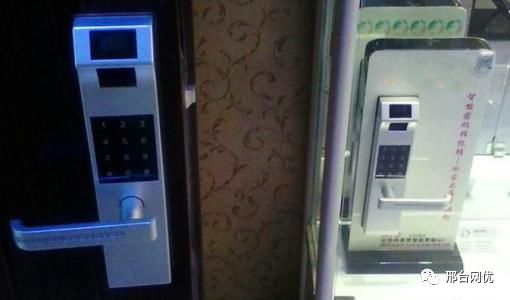
Applying NB-IoT technology in smart home systems, NB-IoT has low power consumption characteristics, requiring only two AA batteries to last for ten years, collecting various basic data and transmitting it to the server, automatically alerting users when abnormal data is collected.
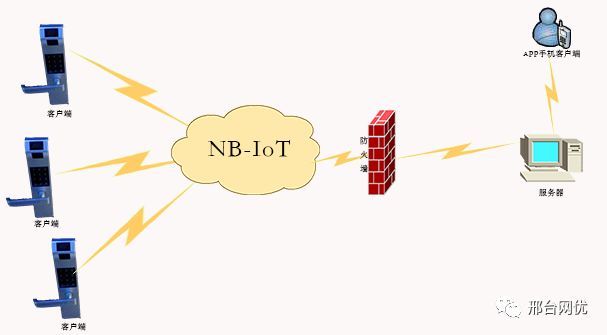
NB-IoT applications in streetlight monitoring
As night falls, various colorful streetlights in the city light up, draping the city in a layer of brilliance.

Using NB-IoT wireless networks enables remote distributed control, allowing for time-based control of streetlights on both sides of the road to be fully on, fully off, or selectively lit. The system can flexibly adjust the timing of streetlight control according to local conditions, with streetlight fault detection functionality actively reporting the location of faulty streetlights.
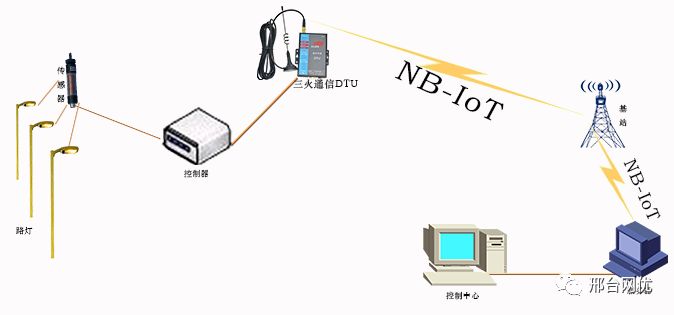
NB-IoT applications in fire systems (smoke detectors)
News reports often mention fire incidents. Smoke detectors are the sentinels of fire systems, capable of real-time smoke detection. When the sensor detects excessive smoke concentration, it sends information to the backend server and activates alarms and related devices. In practical applications, according to fire safety requirements, smoke detectors need to be densely installed, making wiring difficult and costly.

Using NB-IoT wireless smoke detectors can avoid the wiring difficulties, greatly reducing installation costs.
NB-IoT applications in asset tracking systems
With the in-depth development of information technology and various smart terminal devices, the demand for personnel and asset tracking will continue to rise. The application of location services also shows fragmented characteristics, such as asset inventory in smart parks, tracking and handling of medical waste, and pet tracking…

NB-IoT technology can connect assets for tracking, whether in hidden indoor locations or outdoor areas. With its low power consumption, wide coverage, low cost, and small size, NB-IoT technology will become an indispensable communication method in the field of asset tracking.

From December 6 to 7, 2018, the “2018 China IoT Conference” hosted by Electronic Enthusiast Network under Huaqiang Jufeng will be held at the Kexing Science Park International Conference Center in Shenzhen. Experts from Qualcomm, Huawei, Microsoft, ARM, Silicon Labs, ON Semiconductor, ST, Qorvo, Renesas, NXP, Cypress, Honeywell, AMS, Dialog, IDT, Imagination, MathWorks, Zhou Ligong, Sigfox, Keysight, Toshiba, Midea, Haier, and others will gather in Shenzhen to discuss the advancement of IoT development in China.
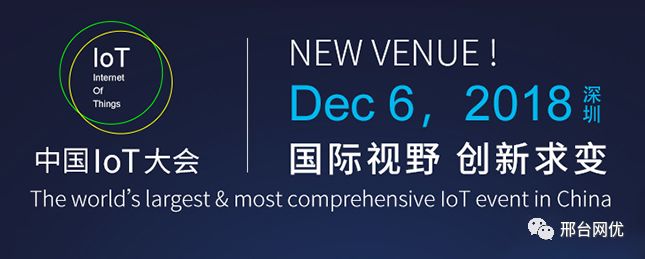

Comparisons will be cute and playful
Comparisons want you to pay attention to me (* ̄∇ ̄*)
